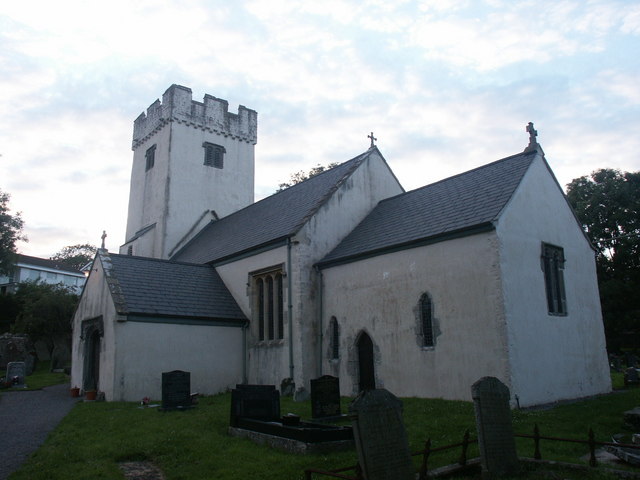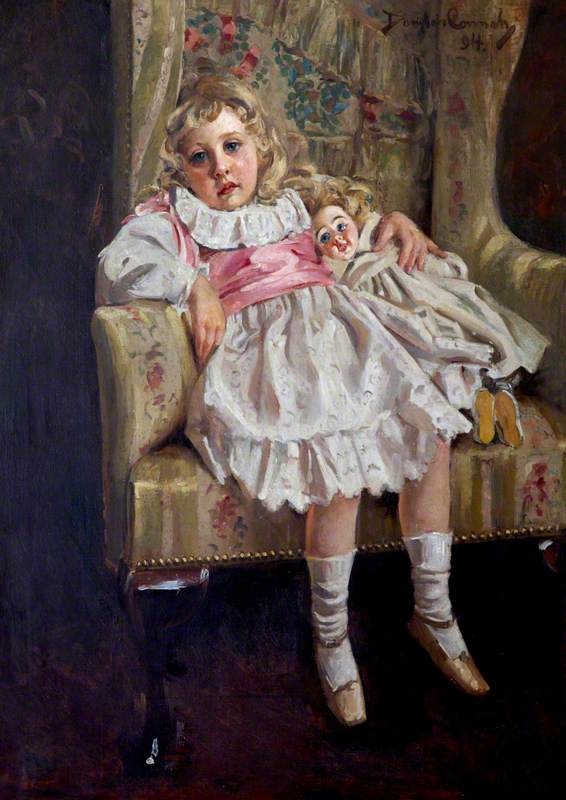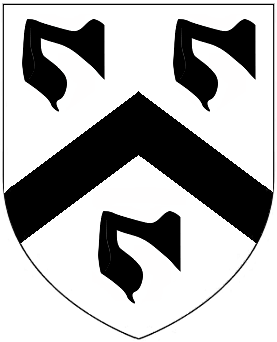|
Pwllywrach
Pwll-y-Wrach or Pwllywrach is a historic manor house to the east of Colwinston, Vale of Glamorgan, south Wales. The house and its Western garden house and Eastern garden house are all listed as Grade II listed buildings in their own right. The novelist Agatha Christie was a frequent visitor to the village and stayed at the house with her daughter Rosalind, son-in-law Hubert, and her only grandchild Mathew used to live at the house; however her other descendants, the Prichard family, still live at the former manor. When Bussy Mansel, 4th Baron Mansel, sold the estate to David Thomas "of Bath", the latter built a new manor house, completed around 1770, which would be altered and extended in the 19th and 20th centuries. The walls are built of rubble with a cement facing and the roof is of Welsh slate. The porch, added in the 19th century, is constructed of Forest of Dean sandstone ashlar Ashlar () is finely dressed (cut, worked) stone, either an individual stone that has been ... [...More Info...] [...Related Items...] OR: [Wikipedia] [Google] [Baidu] |
Colwinston
Colwinston (historically sometimes Colwinstone; cy, Tregolwyn) is both a village and a community in the Vale of Glamorgan, Wales, approximately southeast of the centre of Bridgend and west of the centre of Cardiff. The village is located within of the A48. The population in 2005 was approximately 400 but with recent building development, the population is now estimated at over 600 people. The novelist Agatha Christie was a frequent visitor, and her descendants still live at the former manor house of Pwllywrach. History Archaeological and early historical evidence Bronze Age axe heads discovered on land at Highfield Farm and Iron Age kilns suggest that the area was settled during prehistoric times. The impetus for the development of an agrarian village may have been the local geography: a gentle valley going east to west towards the village, providing a water supply and creating a natural bowl, with a present-day exit leading down Church Lane. Steep slopes in the central par ... [...More Info...] [...Related Items...] OR: [Wikipedia] [Google] [Baidu] |
Vale Of Glamorgan
The Vale of Glamorgan ( cy, Bro Morgannwg ), often referred to as The Vale, is a county borough in the south-east of Wales. It borders Bridgend County Borough to the west, Cardiff to the east, Rhondda Cynon Taf to the north, and the Bristol Channel to the south. With an economy based largely on agriculture and chemicals, it is the southernmost unitary authority in Wales. Attractions include Barry Island Pleasure Park, the Barry Tourist Railway, Medieval wall paintings in St Cadoc's Church, Llancarfan, Porthkerry Park, St Donat's Castle, Cosmeston Lakes Country Park and Cosmeston Medieval Village. The largest town is Barry. Other towns include Penarth, Llantwit Major, and Cowbridge. There are many villages in the county borough. History The area is the southernmost part of the county of Glamorgan. Between the 11th century and 1536 the area was part of the Lordship of Glamorgan. In medieval times, the village of Cosmeston, near what is today Penarth in the south east of t ... [...More Info...] [...Related Items...] OR: [Wikipedia] [Google] [Baidu] |
Grade II Listed Building
In the United Kingdom, a listed building or listed structure is one that has been placed on one of the four statutory lists maintained by Historic England in England, Historic Environment Scotland in Scotland, in Wales, and the Northern Ireland Environment Agency in Northern Ireland. The term has also been used in the Republic of Ireland, where buildings are protected under the Planning and Development Act 2000. The statutory term in Ireland is " protected structure". A listed building may not be demolished, extended, or altered without special permission from the local planning authority, which typically consults the relevant central government agency, particularly for significant alterations to the more notable listed buildings. In England and Wales, a national amenity society must be notified of any work to a listed building which involves any element of demolition. Exemption from secular listed building control is provided for some buildings in current use for worship, ... [...More Info...] [...Related Items...] OR: [Wikipedia] [Google] [Baidu] |
Agatha Christie
Dame Agatha Mary Clarissa Christie, Lady Mallowan, (; 15 September 1890 – 12 January 1976) was an English writer known for her 66 detective novels and 14 short story collections, particularly those revolving around fictional detectives Hercule Poirot and Miss Marple. She also wrote the world's longest-running play, the murder mystery ''The Mousetrap'', which has been performed in the West End since 1952. A writer during the "Golden Age of Detective Fiction", Christie has been called the "Queen of Crime". She also wrote six novels under the pseudonym Mary Westmacott. In 1971, she was made a Dame (DBE) by Queen Elizabeth II for her contributions to literature. ''Guinness World Records'' lists Christie as the best-selling fiction writer of all time, her novels having sold more than two billion copies. Christie was born into a wealthy upper middle class family in Torquay, Devon, and was largely home-schooled. She was initially an unsuccessful writer with six co ... [...More Info...] [...Related Items...] OR: [Wikipedia] [Google] [Baidu] |
Bussy Mansel, 4th Baron Mansel
Bussy Mansel, 4th Baron Mansel (sometimes spelled Mansell) (died 29 November 1750) was a Welsh peer. He succeeded his brother Christopher Mansel as Baron Mansel of Margam (or "Margram") in 1744. Bussy Mansel married Lady Elizabeth Hervey, the daughter of John Hervey, 1st Earl of Bristol, and sister of John Hervey, 2nd Baron Hervey, on 17 May 1724. On 13 March 1729, he married Barbara Villiers, daughter of William Villiers, 2nd Earl of Jersey; she survived him. He had one daughter by his second marriage, Louisa Barbarina Mansel (2 February 1733 – 16 February 1786),UK and Ireland, Find a Grave Index, 1300s-Current. who married George Venables-Vernon, 2nd Baron Vernon George Venables-Vernon, 2nd Baron Vernon (9 May 1735 – 18 June 1813), was the 2nd Baron Vernon of Kinderton. He acceded to the title in 1780 after the death of his father George Venables-Vernon, first Baron Vernon of Kinderton. Vernon was educ ..., on 16 July 1757. Louisa had no children, and the Margam estat ... [...More Info...] [...Related Items...] OR: [Wikipedia] [Google] [Baidu] |
Rubble
Rubble is broken stone, of irregular size, shape and texture; undressed especially as a filling-in. Rubble naturally found in the soil is known also as 'brash' (compare cornbrash)."Rubble" def. 2., "Brash n. 2. def. 1. ''Oxford English Dictionary'' Second Edition on CD-ROM (v. 4.0) © Oxford University Press 2009 Where present, it becomes more noticeable when the land is ploughed or worked. Building "Rubble-work" is a name applied to several types of masonry. One kind, where the stones are loosely thrown together in a wall between boards and grouted with mortar almost like concrete, is called in Italian "muraglia di getto" and in French "bocage". In Pakistan, walls made of rubble and concrete, cast in a formwork, are called 'situ', which probably derives from Sanskrit (similar to the Latin 'in situ' meaning 'made on the spot'). Work executed with more or less large stones put together without any attempt at courses is called rubble walling. Where similar work is laid in cour ... [...More Info...] [...Related Items...] OR: [Wikipedia] [Google] [Baidu] |
Slate
Slate is a fine-grained, foliated, homogeneous metamorphic rock derived from an original shale-type sedimentary rock composed of clay or volcanic ash through low-grade regional metamorphism. It is the finest grained foliated metamorphic rock. Foliation may not correspond to the original sedimentary layering, but instead is in planes perpendicular to the direction of metamorphic compression. The foliation in slate is called "slaty cleavage". It is caused by strong compression causing fine grained clay flakes to regrow in planes perpendicular to the compression. When expertly "cut" by striking parallel to the foliation, with a specialized tool in the quarry, many slates will display a property called fissility, forming smooth flat sheets of stone which have long been used for roofing, floor tiles, and other purposes. Slate is frequently grey in color, especially when seen, en masse, covering roofs. However, slate occurs in a variety of colors even from a single locality; for ex ... [...More Info...] [...Related Items...] OR: [Wikipedia] [Google] [Baidu] |
Ashlar
Ashlar () is finely dressed (cut, worked) stone, either an individual stone that has been worked until squared, or a structure built from such stones. Ashlar is the finest stone masonry unit, generally rectangular cuboid, mentioned by Vitruvius as opus isodomum, or less frequently trapezoidal. Precisely cut "on all faces adjacent to those of other stones", ashlar is capable of very thin joints between blocks, and the visible face of the stone may be quarry-faced or feature a variety of treatments: tooled, smoothly polished or rendered with another material for decorative effect. One such decorative treatment consists of small grooves achieved by the application of a metal comb. Generally used only on softer stone ashlar, this decoration is known as "mason's drag". Ashlar is in contrast to rubble masonry, which employs irregularly shaped stones, sometimes minimally worked or selected for similar size, or both. Ashlar is related but distinct from other stone masonry that is ... [...More Info...] [...Related Items...] OR: [Wikipedia] [Google] [Baidu] |
Grade II Listed Buildings In The Vale Of Glamorgan
Grade most commonly refers to: * Grade (education), a measurement of a student's performance * Grade, the number of the year a student has reached in a given educational stage * Grade (slope), the steepness of a slope Grade or grading may also refer to: Music * Grade (music), a formally assessed level of profiency in a musical instrument * Grade (band), punk rock band * Grades (producer), British electronic dance music producer and DJ Science and technology Biology and medicine * Grading (tumors), a measure of the aggressiveness of a tumor in medicine * The Grading of Recommendations Assessment, Development and Evaluation (GRADE) approach * Evolutionary grade, a paraphyletic group of organisms Geology * Graded bedding, a description of the variation in grain size through a bed in a sedimentary rock * Metamorphic grade, an indicatation of the degree of metamorphism of rocks * Ore grade, a measure that describes the concentration of a valuable natural material in the surrounding ... [...More Info...] [...Related Items...] OR: [Wikipedia] [Google] [Baidu] |
Country Houses In Wales
A country is a distinct part of the world, such as a state, nation, or other political entity. It may be a sovereign state or make up one part of a larger state. For example, the country of Japan is an independent, sovereign state, while the country of Wales is a component of a multi-part sovereign state, the United Kingdom. A country may be a historically sovereign area (such as Korea), a currently sovereign territory with a unified government (such as Senegal), or a non-sovereign geographic region associated with certain distinct political, ethnic, or cultural characteristics (such as the Basque Country). The definition and usage of the word "country" is flexible and has changed over time. ''The Economist'' wrote in 2010 that "any attempt to find a clear definition of a country soon runs into a thicket of exceptions and anomalies." Most sovereign states, but not all countries, are members of the United Nations. The largest country by area is Russia, while the smallest is ... [...More Info...] [...Related Items...] OR: [Wikipedia] [Google] [Baidu] |







